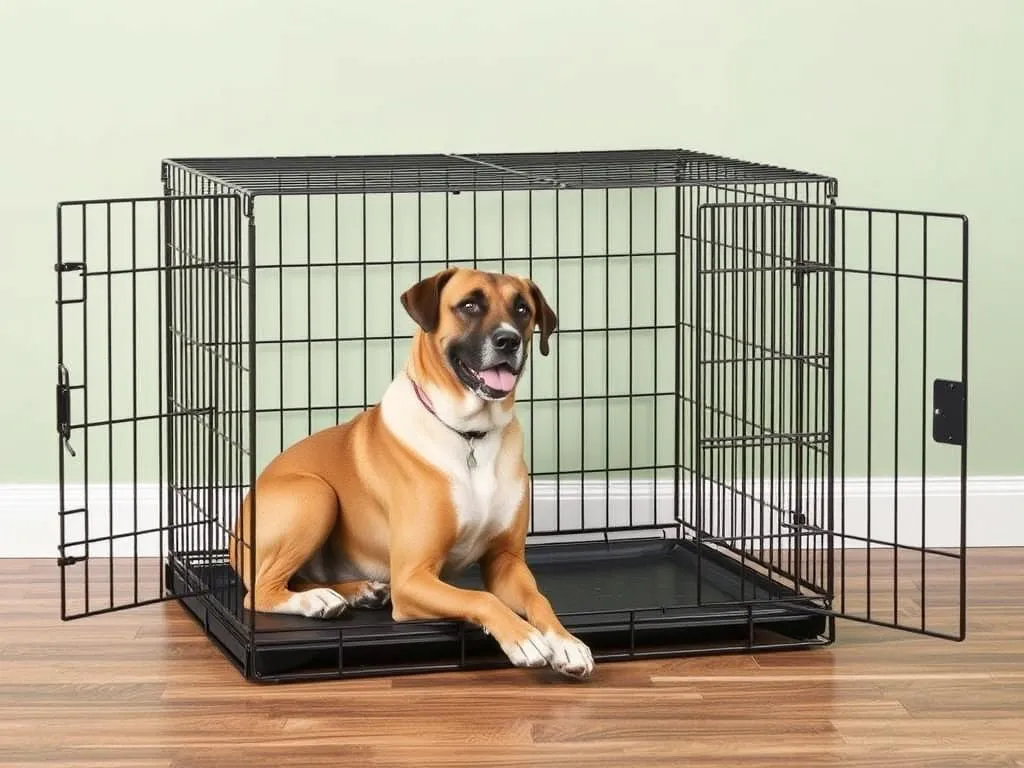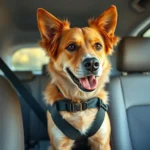
Introduction
When it comes to providing a safe and secure environment for your beloved pets, choosing the right dog crate is essential, especially for large dogs. A well-selected crate not only enhances your pet’s comfort but also contributes to their overall safety and well-being. It serves as a personal space where your furry friend can relax and feel secure. This guide aims to help you navigate through the various options available, ensuring you find the best dog crates for large dogs that cater to your specific needs.
Understanding Dog Crates
What is a Dog Crate?
A dog crate is a confined space designed to keep dogs safe and secure. It mimics a den-like environment, allowing dogs to feel sheltered. Crate training is particularly beneficial for large dogs as it helps them develop a sense of security and can alleviate anxiety in new or stressful situations. Additionally, crates can be helpful during travel, vet visits, or when you need to contain your pet temporarily.
Types of Dog Crates
When it comes to dog crates for large dogs, several types are available, each with its pros and cons:
-
Wire Crates: These are durable and provide excellent ventilation. They are easy to clean and offer a clear view of the surroundings, which can comfort some dogs. However, they may not offer as much privacy.
-
Plastic Crates: Often used for travel, these crates provide a more enclosed environment, which some dogs prefer. They are sturdy and can be easier to transport, but they may lack ventilation and visibility compared to wire crates.
-
Soft-Sided Crates: Ideal for travel, these are lightweight and portable. However, they may not provide adequate security for a large, strong dog. They are best for calm and crate-trained dogs.
-
Heavy-Duty Crates: Built for strong and aggressive chewers, these crates are incredibly durable and can withstand considerable force. They are often more expensive but offer peace of mind for owners of large breeds.
Factors to Consider When Choosing a Dog Crate
Size
Choosing the right size crate for your large dog is crucial. A crate that is too small can make your dog feel cramped, while one that is too large may not provide the feeling of security they need. To determine the appropriate size, measure your dog from the tip of their nose to the base of their tail and add a few inches for comfort. The crate should allow your dog to stand up, turn around, and lie down comfortably.
Material
The material of the crate significantly affects its durability and safety.
-
Metal: Durable and chew-resistant, metal crates are ideal for large dogs. Ensure they have rounded edges and secure locks.
-
Plastic: These are lightweight and portable but check for sturdiness, especially if your dog is an aggressive chewer.
-
Fabric: Soft-sided crates are great for calm dogs but may not hold up to a determined escape artist.
Design and Features
Look for specific design elements that enhance functionality:
-
Ventilation: Proper airflow is essential, especially for large breeds.
-
Accessibility: Ensure the crate has doors that are easy to open and close.
-
Security Locks: Strong locks are crucial to prevent escapes.
Consider features like foldability for easy storage and transport, as well as removable trays for easy cleaning.
Comfort
A comfortable crate is essential for your dog’s well-being. Consider investing in high-quality crate bedding to provide cushioning. Orthopedic beds can be beneficial for older dogs or those with joint issues. Additionally, toys and familiar items can help make the crate a more inviting space.
Top Recommendations for Large Dog Crates
Brand A: Product Name
This crate is known for its robust design and versatility.
- Key Features: Made from heavy-duty materials, this crate includes dual doors for easy access and a removable tray for cleaning.
- Pros: Extremely durable, secure locks, excellent ventilation.
- Cons: Higher price point.
- Price Range: $150 – $250.
Brand B: Product Name
An affordable yet reliable option, this crate is perfect for those on a budget.
- Key Features: Constructed from a sturdy wire frame with a double door design, it also folds flat for easy storage.
- Pros: Affordable, easy to assemble and disassemble.
- Cons: Not chew-proof.
- Price Range: $70 – $120.
Brand C: Product Name
This plastic crate is ideal for travel with larger breeds.
- Key Features: Airline-approved with a secure locking mechanism and ample ventilation.
- Pros: Lightweight, easy to transport, solid construction.
- Cons: Limited visibility, not suitable for aggressive chewers.
- Price Range: $100 – $180.
Brand D: Product Name
A heavy-duty crate that can withstand the strongest dogs.
- Key Features: Made from reinforced steel, this crate features dual locking mechanisms and a removable tray.
- Pros: Extremely durable, designed for escape artists.
- Cons: Bulky and heavy.
- Price Range: $250 – $400.
Brand E: Product Name
This soft-sided crate is excellent for calm dogs and travel.
- Key Features: Lightweight with mesh panels for ventilation, it folds flat for easy transport.
- Pros: Portable, easy to set up, good for indoor use.
- Cons: Not suitable for strong chewers.
- Price Range: $60 – $100.
How to Properly Introduce Your Dog to a Crate
Steps for Crate Training
Crate training can be a smooth process when approached correctly. Here’s a step-by-step guide:
-
Choose the Right Location: Place the crate in a quiet area of the house where your dog feels comfortable but isn’t isolated.
-
Make it Inviting: Add bedding, toys, and treats to create a positive environment.
-
Encourage Exploration: Leave the door open and allow your dog to explore the crate at their own pace.
-
Introduce Short Periods: Start by encouraging your dog to enter for short periods, gradually increasing the time they spend inside.
-
Use Positive Reinforcement: Reward your dog with treats and praise when they enter or stay in the crate.
-
Practice Regularly: Incorporate crate time into daily routines, ensuring it becomes a normal part of their life.
Common Challenges and Solutions
Crate training isn’t without its challenges. Here are some common issues and solutions:
-
Reluctance to Enter: If your dog is hesitant, try using treats or toys to entice them. Never force them into the crate.
-
Barking or Whining: This behavior can indicate discomfort. Ensure the crate is a positive place and gradually increase their time inside.
-
Destructive Behavior: If your dog is chewed through the crate or trying to escape, consider a more durable option or assess whether they are crate-trained properly.
Maintenance and Care for Dog Crates
Cleaning and Sanitation
Regular cleaning is essential for maintaining a hygienic environment. Here are some best practices:
- Remove Bedding: Take out any bedding and washable items before cleaning.
- Use Pet-Safe Products: Choose non-toxic cleaners to avoid harming your dog.
- Wipe Down Surfaces: Use a damp cloth to clean the crate’s surfaces and remove any debris or odors.
Regular Inspections
It’s vital to regularly inspect your dog’s crate for wear and tear. Look for:
- Rust or Damage: Check metal crates for rust and ensure there are no sharp edges.
- Cracks in Plastic: Inspect plastic crates for signs of cracking or weakness.
- Wear on Locks: Ensure that locks are functioning correctly to prevent escapes.
Conclusion
Selecting the right crate for your large dog is crucial to ensuring their comfort, safety, and happiness. By considering the factors discussed, you can make an informed decision that suits both your needs and those of your pet. Remember, the right crate can significantly enhance your dog’s quality of life, providing them a personal sanctuary they can call their own.









